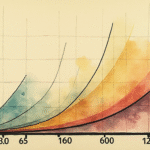Background on José Antonio Peña Merino and his Role
José Antonio Peña Merino serves as the head of the Agencia de Transformación Digital y Telecomunicaciones (ADYT), Mexico’s Digital Transformation and Telecommunications Agency. Under his leadership, the federal government is actively pushing for the development of a digital payments ecosystem in Mexico.
Government’s Push for Digital Payments
During the conference “Digitalization and Reduction of Cash Usage in the Economy” at the 88th Bancaria Convention, Peña Merino emphasized that transitioning to a digital payments system is inevitable.
Benefits of Digital Payments
- Bancarización: Increased access to banking services
- Convenience: Easier and faster transactions
- Reduced transaction costs
- Enhanced security and traceability
- Combating money laundering
Challenges and Concerns
Peña Merino acknowledged that there is no evidence showing digital payments directly reduce poverty, decrease inequality, foster prosperity, boost microentrepreneurship, or improve access to credit.
“Common Task” for Government and Private Sector
Peña Merino stressed the importance of collaboration between the government and private sector, particularly in finance, to create a digital payments mechanism that also promotes prosperity, credit access, and benefits everyone.
Five Phases for Developing a Digital Payments Ecosystem
Peña Merino outlined five phases for establishing a digital payments ecosystem in Mexico:
Phase 1: Coverage and Accessibility to Data
At least 10 million Mexicans live in areas without infrastructure coverage, and 3 million people have access but cannot afford data.
Phase 2: Digital Identity
The government plans to create “Llave MX,” an application that stores personal documents and simplifies governmental procedures.
Phase 3: Security
Implementing authentication mechanisms for varying service levels.
Phase 4: Interoperability and Synchronization
Creating a mechanism that allows different information systems to interoperate.
Conference Participants
Eswar Prasad Tolani, Senior Professor of Trade Policy at Cornell University, and Lauren H. Cohen, Harvard Business School professor specializing in finance and investments, also participated in the conference.
Key Questions and Answers
- Q: What is the main goal of the Mexican government’s digital payments initiative?
A: To create a comprehensive digital payments ecosystem that promotes prosperity, credit access, and benefits all sectors of society.
- Q: What are the benefits of digital payments?
A: Digital payments offer advantages such as increased bancarización, convenience, reduced transaction costs, enhanced security and traceability, and combating money laundering.
- Q: What concerns does the government have regarding digital payments?
A: There is no evidence that digital payments directly reduce poverty, decrease inequality, foster prosperity, boost microentrepreneurship, or improve access to credit.
- Q: What are the five phases for developing a digital payments ecosystem in Mexico?
A: The five phases are coverage and accessibility to data, digital identity, security, interoperability and synchronization, and collaboration between government and private sector.






